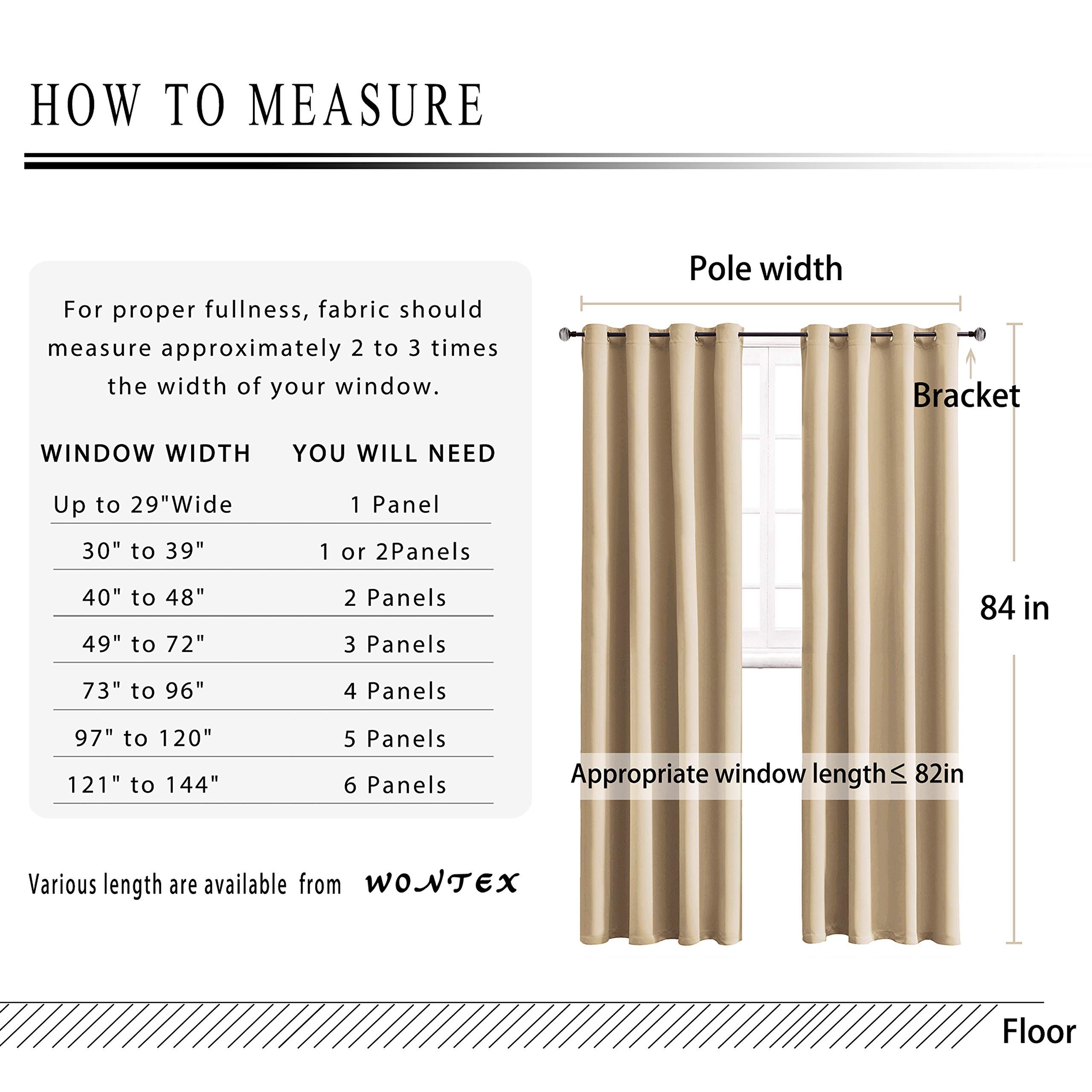Unlock the secrets of perfect curtains! Say goodbye to guesswork and hello to curtains that fit your windows like a dream. From measuring to choosing standard or custom sizes, this guide has you covered. Get ready to enhance your home’s style and functionality with curtains that make a statement.
Finding the Perfect Fit: A Guide to Curtain Sizes
Curtains have the power to transform a room, adding a touch of elegance, warmth, and personality. But before you hit the stores, it’s essential to understand curtain sizes. A perfect fit can elevate your decor, while an ill-fitting one might leave your windows looking awkward.
This comprehensive guide demystifies curtain sizes, equipping you with the knowledge to make confident choices for your windows.
Measuring Made Easy
Accurate measurements are the cornerstone of well-fitting curtains. Before you even think about styles or fabrics, grab your measuring tape and let’s get started.
-
Inside vs. Outside Mount:
-
Inside Mount: Curtains are hung inside the window frame, creating a clean, minimalist look. Measure the width of the window frame at the top, middle, and bottom, using the smallest measurement. Do the same for the height.
-
Outside Mount: Curtains are hung outside the window frame, creating a fuller look and offering better light control. Measure the width as before, but add 3 to 6 inches on each side. For the height, measure from where you’d like the curtain rod to be installed down to your desired curtain end point.
-
Decoding Curtain Length:
-
Sill Length: Ending at the window sill, they offer a neat, casual look, ideal for kitchens, bathrooms, or smaller windows.
- Apron Length: Falling 1 to 4 inches below the sill, they provide a touch more coverage while maintaining a balanced aesthetic.
- Floor Length: A classic choice, just grazing the floor, instantly adding elegance and making your ceilings appear taller.
- Puddle Length: For a dose of drama, these curtains pool gracefully on the floor (add 2-6 inches to your floor-length measurement).
Understanding Standard Curtain Sizes
In the US, most ready-made curtains come in a standard width of 48 inches. However, lengths vary to accommodate different window heights and styles. You’ll likely find options like 63, 84, 96, and 108 inches, corresponding to the curtain lengths we discussed earlier.
Navigating Curtain Width and Fullness
Curtain width determines how much fabric spans your window, influencing the overall fullness and drape.
- Narrow Curtains (45-54 inches): Suitable for smaller windows or for combining multiple panels for a layered effect.
- Standard Curtains (55-80 inches): A versatile choice for most windows, offering a balanced look without appearing too skimpy or overwhelming.
- Extra-Wide Curtains (81-108 inches): Ideal for large windows or those seeking a grand, dramatic statement.
For a pleasing fullness, aim for a curtain panel width that’s at least 2-3 times the width of your window.
Beyond Standard: When to Consider Custom Sizes
While standard sizes cater to most, don’t shy away from custom options if:
- You have uniquely shaped windows (arched, bay, etc.).
- You desire a specific length that falls outside the standard offerings.
- You’re working with unique ceiling heights or architectural details.
Deciphering Curtain Sizes: A Case Study of a 72-inch Window
Let’s apply our newfound knowledge to a real-world example. Imagine you have a 72-inch wide window. How do you determine the ideal curtain size?
1. Curtain Width:
- 1.5x Fullness (casual look): Approximately 108 inches of total curtain width.
- 2x Fullness (balanced look): Approximately 144 inches of total curtain width (a popular choice for a classic feel).
- 3x Fullness (dramatic look): Approximately 216 inches of total curtain width (ideal for a luxurious, opulent effect).
2. Curtain Length:
- Refer to the “Decoding Curtain Length” section above and choose the length that complements your style and window placement.
Remember: These are just guidelines. Your personal style and the overall aesthetic you want to achieve should guide your final decision.
Essential Tips for Curtain Success
- Measure Twice, Buy Once: Accurate measurements are crucial, so double-check your work before ordering.
- Consider Header Type: The header (the top part of the curtain) affects fullness and drape. Explore options like grommets, rod pockets, or pinch pleats.
- Room Function Matters: Living rooms and bedrooms might benefit from light-filtering or blackout curtains, while kitchens and bathrooms often suit lighter fabrics.
- Don’t Forget the Rod: Choose a curtain rod that complements your curtain style and extends beyond the window frame for optimal coverage and a visually pleasing drape.
You can also go for curtains that can be hung behind the bed, which create a beautiful canopy effect. For more ideas on curtains for living rooms and bedrooms, check out our curtain for living room and curtains behind bed pages.
With this guide, you’re well on your way to becoming a curtain-sizing expert. Remember, these are just guidelines. Don’t be afraid to experiment, trust your instincts, and most importantly, choose curtains that reflect your unique style and make your home feel complete.
- How to Get Rid of Mushrooms in Your Lawn: A Complete Guide - April 24, 2025
- How to Get Rid of Ground Hornets: A Safe and Effective Guide to Eliminating Nests - April 24, 2025
- How to Get Rid of German Roaches Fast: DIY Methods for Quick Control - April 24, 2025










